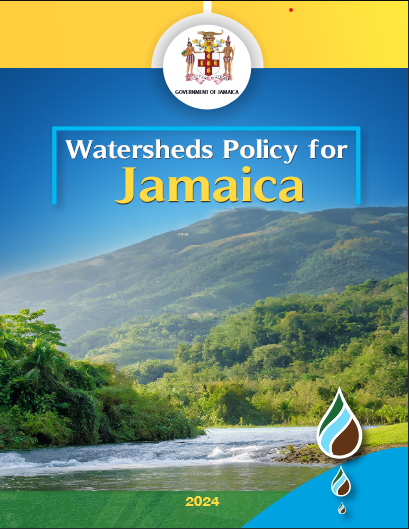Negril Beach Restoration Efforts - A Clearer Picture
Published Date: May 02, 2014
Media Release
Attention: All News Editors KINGSTON, Jamaica
(2 May 2014):
NEGRIL BEACH RESTORATION EFFORTS- A CLEARER PICTURE
Dear Mr. Editor, Sir
The National Environment and Planning Agency (NEPA) has taken note of a full page advertisement published in the Jamaica Gleaner newspaper on Wednesday 30 April 2014; a press conference convened by selected stakeholders of the Negril community on the same date; and an article in the newspaper titled ‘Negril Hoteliers Against Breakwater Plan,’ published Thursday, 1 May 2014.
We take this opportunity to make the following response to the statements made by the Negril stakeholders and to set the background and context to the beach management issues in the resort town.
The shoreline in Negril, Westmoreland has been eroding on a continuous basis over the years. Historical tracking data show that sections of the shoreline have eroded some 62 metres over the last 45 years. Erosion continues to take place due to natural causes, including the frequency and intensity of extreme weather events, and anthropogenic factors such as unplanned developments and marine pollution.
The Agency recognizes the negative trends in the Negril environment and has taken a number of management initiatives to retard, reverse and eventually improve the existing trends, and or rehabilitate the area.
Addressing the Negril Coast
Since 2010, NEPA, along with the Planning Institute of Jamaica (PIOJ), has mobilized over J$500 million from local and international donor agencies, as well as from the Natural Resources Conservation Authority (NRCA) for an integrated approach to address the issues in Negril. Specifically, the following measures have been completed under a Government of Jamaica/European Union/ United Nations Environment Programme (UNEP)’s Climate Change Adaptation and Disaster Risk Reduction Project (Climate Change Adaptation Project).
• The installation of an artificial reef system
• Planting of 1500 sq. metres of seagrass
• Testing of Shorelock on 250 metres of beach
• The installation of mooring buoys within the Marine Park
• Installation of 4 temperature gauges (data loggers)
• The development of a draft Negril Marine Park Management Plan
• The promotion and support of an alternative livelihood initiative (where traditional livelihoods are increasing pressures to the marine environment which is already being impacted by Climate Change)
NEPA is also implementing the project, Enhancing the Resilience of the Agriculture Sector and Coastal Areas to Protect the Livelihoods and Improve Food Security Project (Adaptation Fund Project). This is being funded by the Adaptation Fund for Climate Change and will see the construction of two (2) breakwater structures within Long Bay Negril.
We are currently in dialogue with the Global Environment Facility (GEF) with assistance from the Caribbean Public Health Agency (CARPHA) to fund a project that was developed with the Negril Environmental Protection Trust entitled, Integrated Water, Land and Ecosystems in Caribbean Small Island Developing States (IWEco) Project. This project is still in the development phase and will be designed with the objective to improve the hydro-dynamics of the Negril Great Morass.
Additionally, with the kind support of the Tourism Enhancement Fund (TEF) to the sum of J$7 million, the Agency has engaged 3 additional Enforcement Officers with special skills in Marine, Terrestrial and Planning. The additional staff has built NEPA’s capacity to further enforce environmental and planning laws within Negril.
Other initiatives pursued in Negril include the preparation of a zoning plan for the Negril Marine Park; the implementation of the Watershed Area Management Mechanism to reduce the degradation of the watershed; and the Town and Country Planning Authority’s recent publication of the Negril/Green Island Provisional Development Order (2013) which serves to guide orderly development in the area.
All interventions in Negril have benefitted from detailed auditing and have received endorsements from the donor agencies who have, along with the Jamaican Government, established environmental safeguards and international best practices to which we have complied.
As late as July 2013, the Agency mobilized a meeting with the Hon. Robert Pickersgill, Minister of Water, Land, Environment and Climate Change; Ian Hayles, Minister of State in the Ministry of Water, Land, Environment and Climate Change; and Hon. Dr. Wykeham McNeil, Minister of Tourism and Entertainment; along with technical advisors, and heads of government agencies including the Urban Development Corporation (UDC); Housing Agency of Jamaica; the Commission of Lands; the Negril/ Green Island Area Local Planning Authority (NGIALPA); the Mayor of Savannah-laMar; and the Mayor of Lucea to discuss the planning and development issues in Negril. The meeting developed a plan of action for Negril which will act as the blueprint for action and intervention.
The National Environment and Planning Agency’s intervention in Negril has been guided by a number of professional and technical studies conducted by the University of the West Indies (Mona), Smith Warner International Ltd., Dr. Malcolm Hendry and the technical monitoring and assessment by our Ecosystems Management Branch. The 2007 Smith Warner report, which was commissioned by the Negril community, recommended two (2) types of solutions for the rehabilitation of the beach; Beach Nourishment and the installation of nearshore Breakwater.
Negril Stakeholder Advertisement in Gleaner
The Negril stakeholder advertisement in the Gleaner newspaper dated Wednesday 30 April 2014 is an erroneous and malicious representation of the intended breakwater structures and what they are intended to do. In fact, the breakwaters will be approximately 1.5 kilometres offshore and will be submerged, therefore not visible from the beach.
The installation of the breakwaters is of critical importance to the protection of the Negril community. The breakwaters will reduce wave action, protect the coastline and allow for beach accretion. We are also confident they will resuscitate activities in the community and enhance the tourism product. As part of the medium to long term measure, beach nourishment will also be implemented. All interventions have benefited from extensive stakeholder consultation, including meetings led by the Environment Minister, Honourable Robert Pickersgill, and the Tourism Minister and Entertainment, Dr. Wykeham McNeil, on at least two (2) occasions.
Erroneous Statements in Gleaner article
Under the newest Adaptation Fund Project, the Agency categorically states that there is no intention to remove boulders from the South Negril River. Secondly, the plan being pursued is not a short term fix but part of a holistic and sustained restoration effort.
The consultancy firm, CEAC Solutions Company Limited designed the engineering solution for the breakwater structures that have since been modeled and tested by the University of Delaware’s Center for Applied Coastal Research (CACR) Ocean Engineering Laboratory in Delaware, USA. The Center has endorsed the design and placement of the breakwaters. The Centre is confident the design will withstand major 1 in 100 year storm events and has also concluded that the structures will be climate resilient as the design takes into consideration changes in wave climate and increased water levels.
The Environmental Impact Assessment (EIA) report for the breakwaters was just recently completed by CL Environmental Limited, and the report should be uploaded to the Agency’s website by Monday, 5 May 2014.
The EIA procedure makes it mandatory to consult with the public. Thus, consultation will be convened with the Negril stakeholders within the next 30 days. This consultation will give all yet another opportunity to see and hear the plans and raise any concerns. The Agency is not only mandated but happy to record and consider any material comments from the consultations before making a recommendation to the Natural Resources Conservation Authority (NRCA). The EIA will also benefit from the technical review from key government agencies and academia before any recommendation is made.
Mr. Editor, Sir, the National Environment and Planning Agency has not to date varied from the established guidelines for considering and reviewing such projects, and we have no intention of doing so. We also have not ignored or bypassed the Negril stakeholders in this exercise.
We hope this statement has provided more light to the Negril landscape and we look forward to consulting and working with all stakeholders in Negril in a transparent and participatory manner.
Signed, Peter Knight Chief Executive Officer/Government Town Planner, NEPA
Please click to view in The Gleaner: http://jamaicagleaner.com/gleaner/20140505/cleisure/cleisure4.html Please click to view in the Jamaica Observer: http://jamaicagleaner.com/gleaner/20140505/cleisure/cleisure4.html
- Log in to post comments

